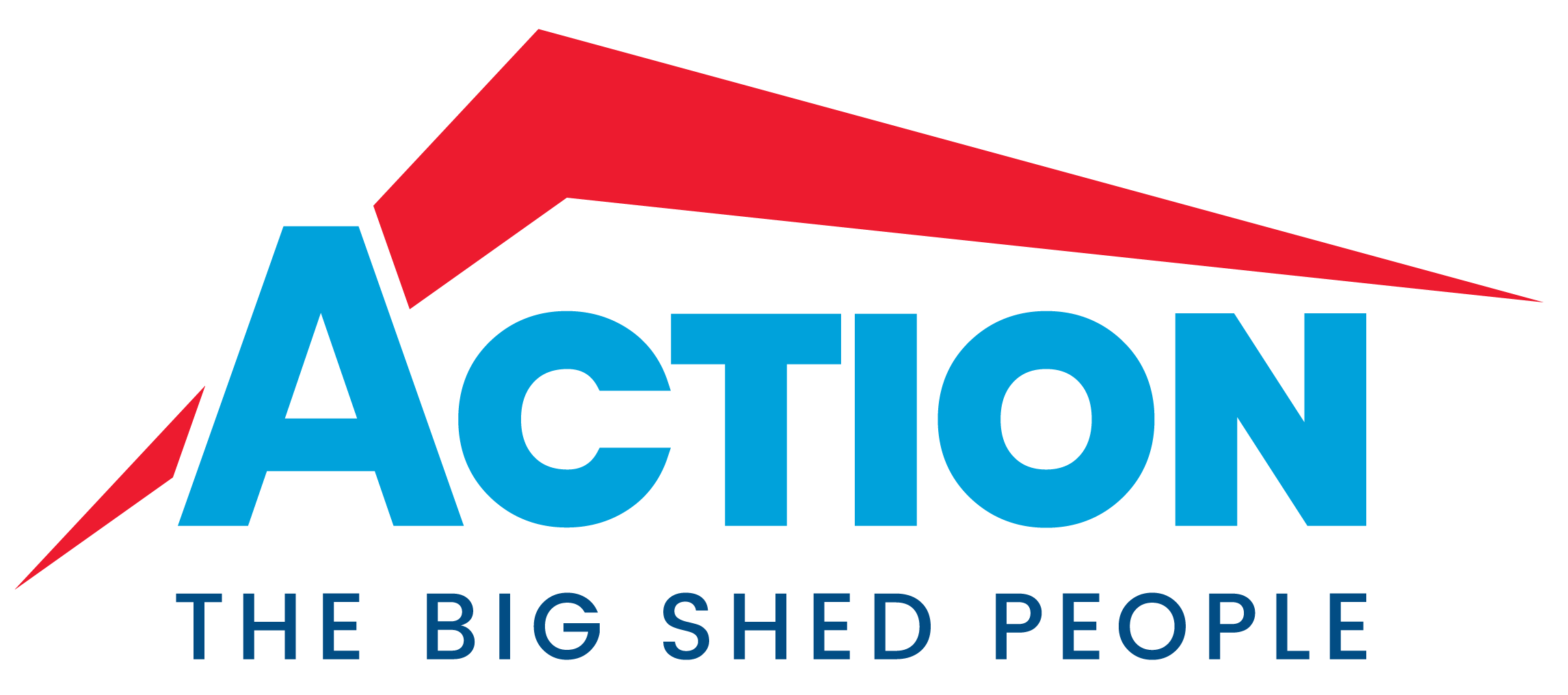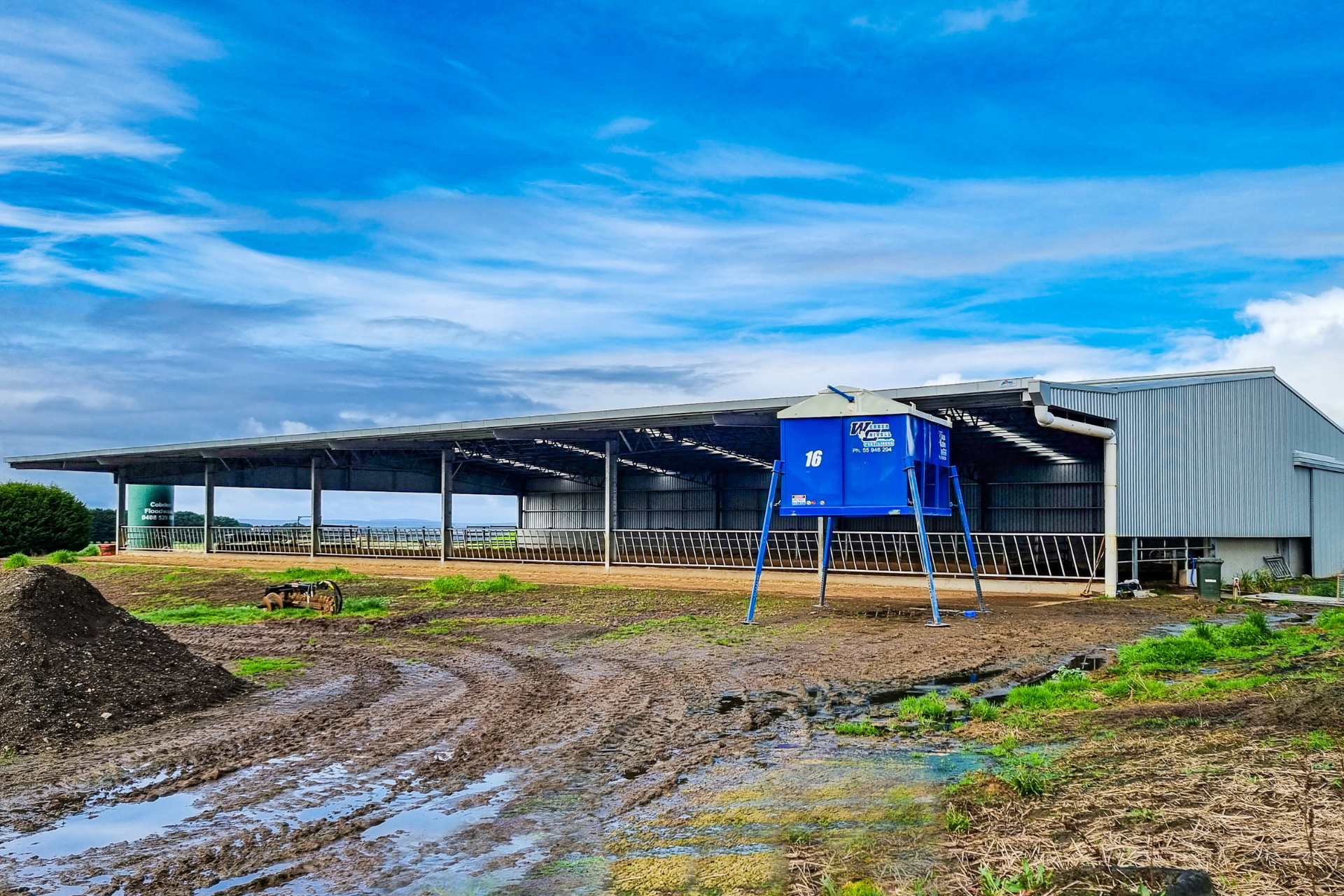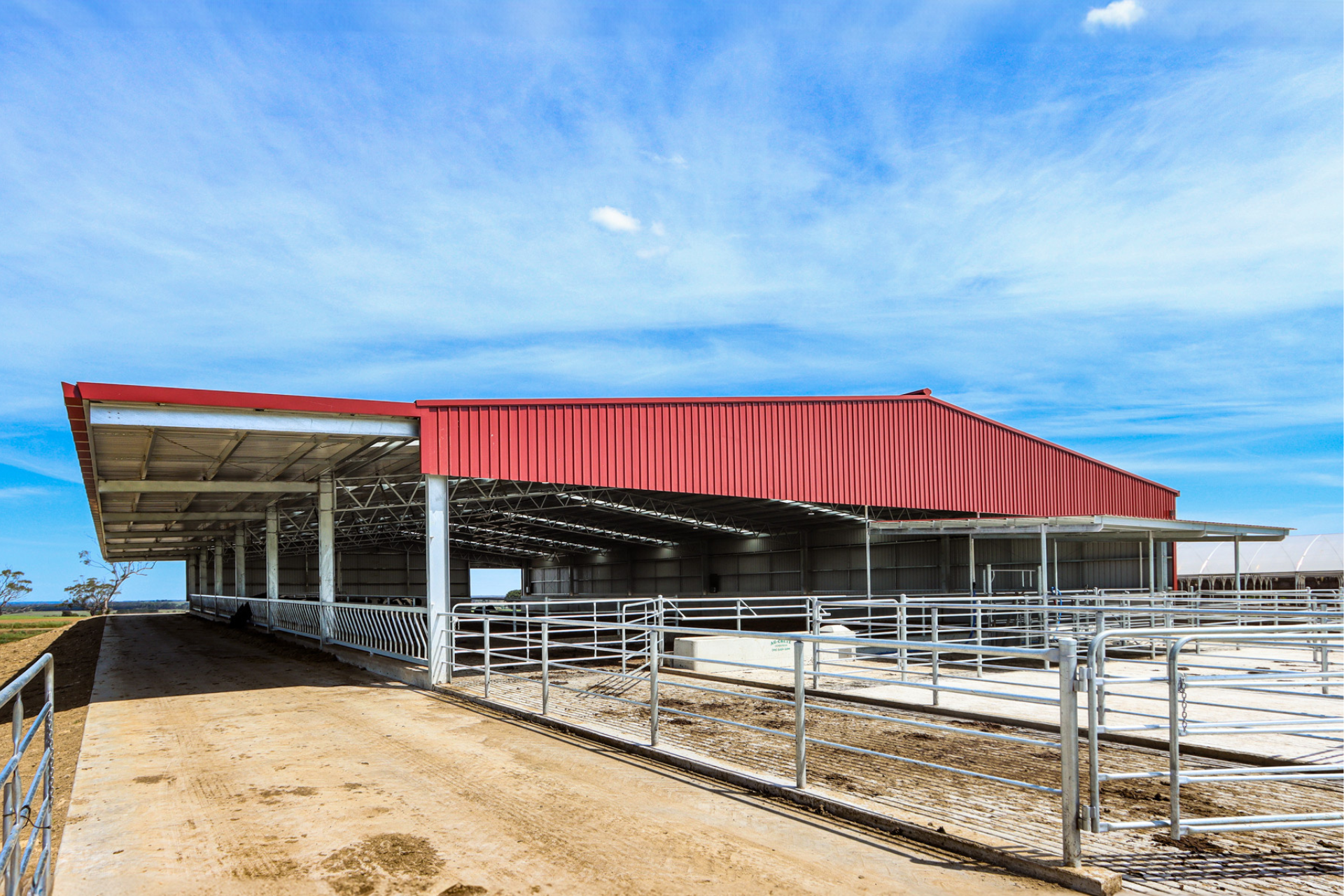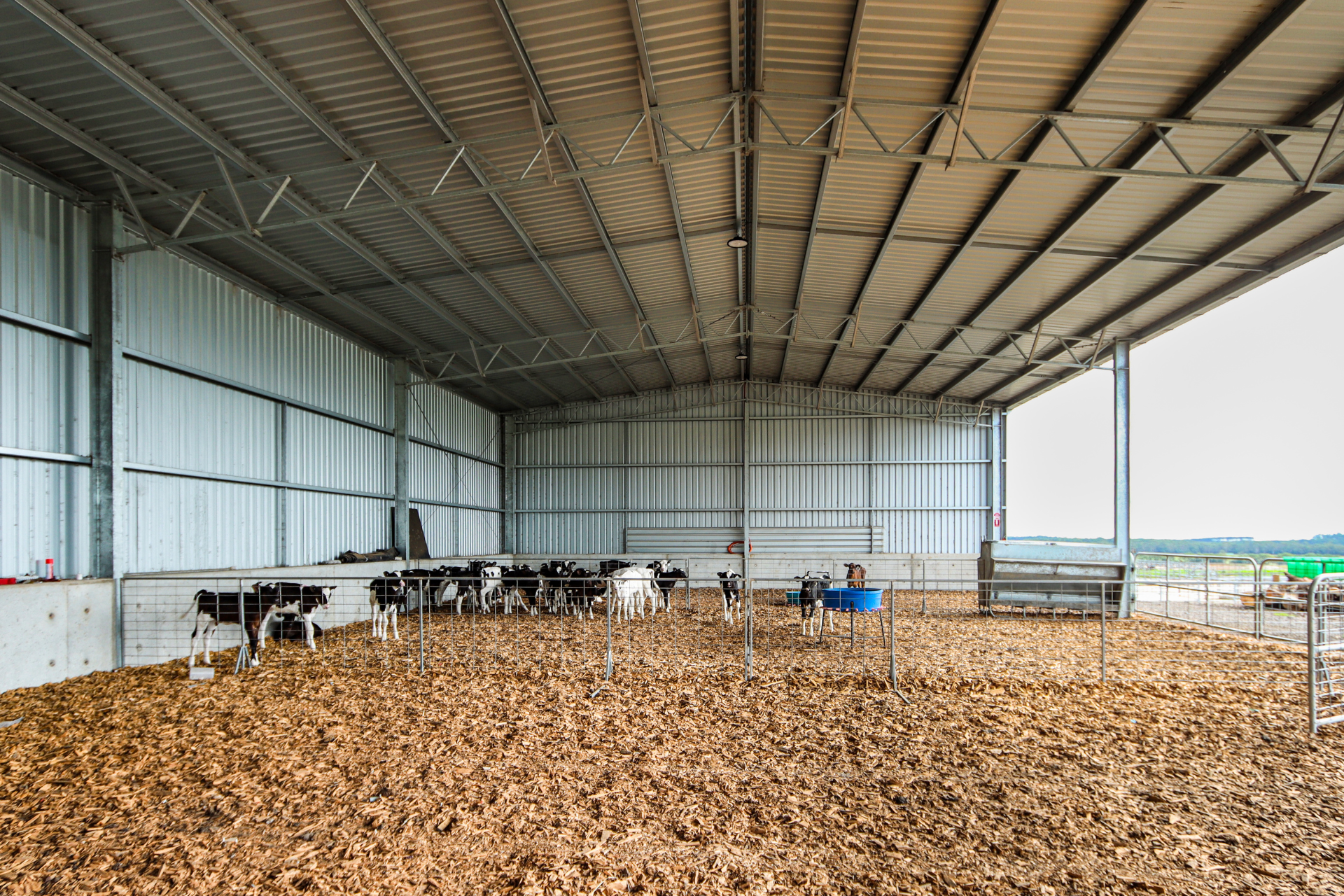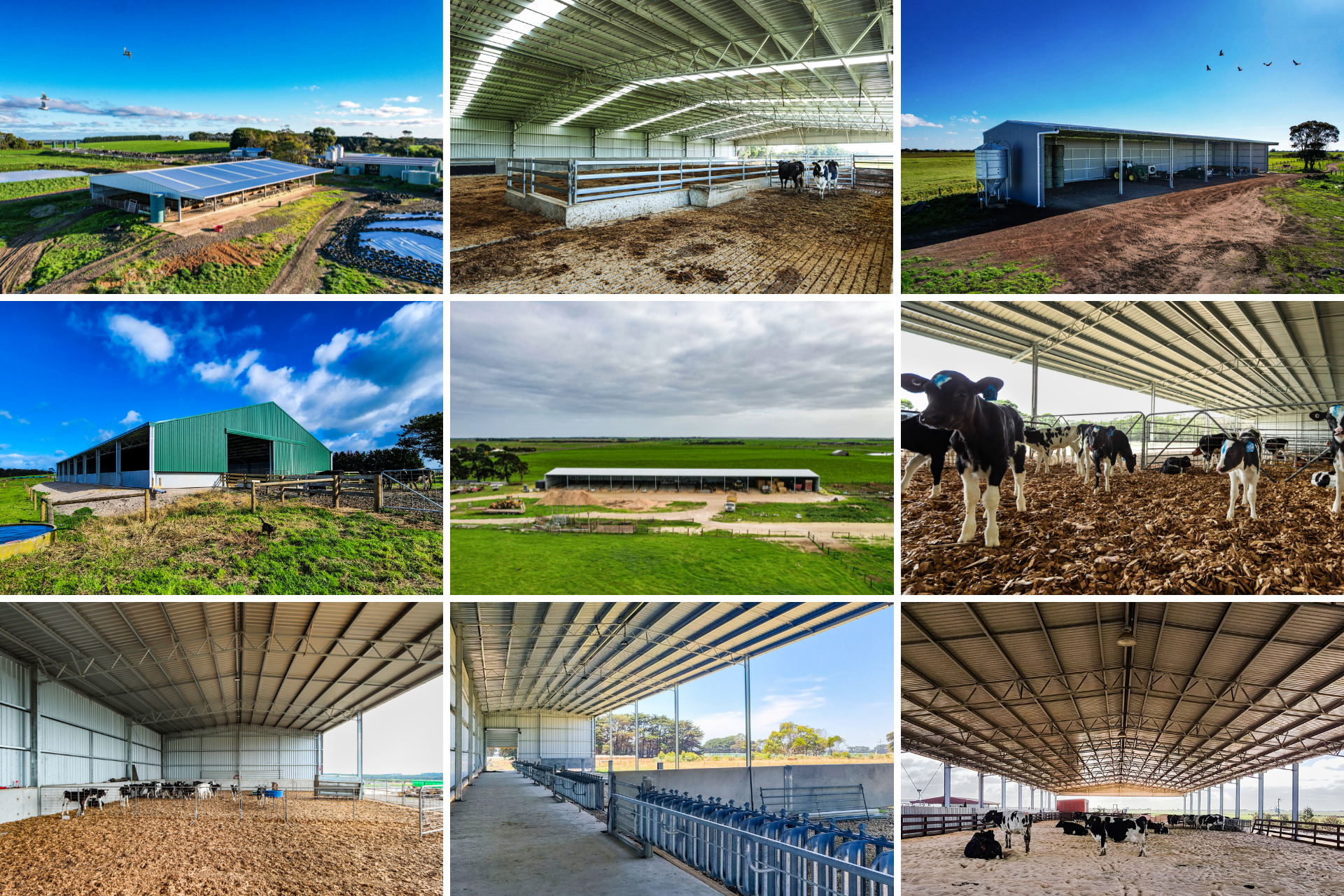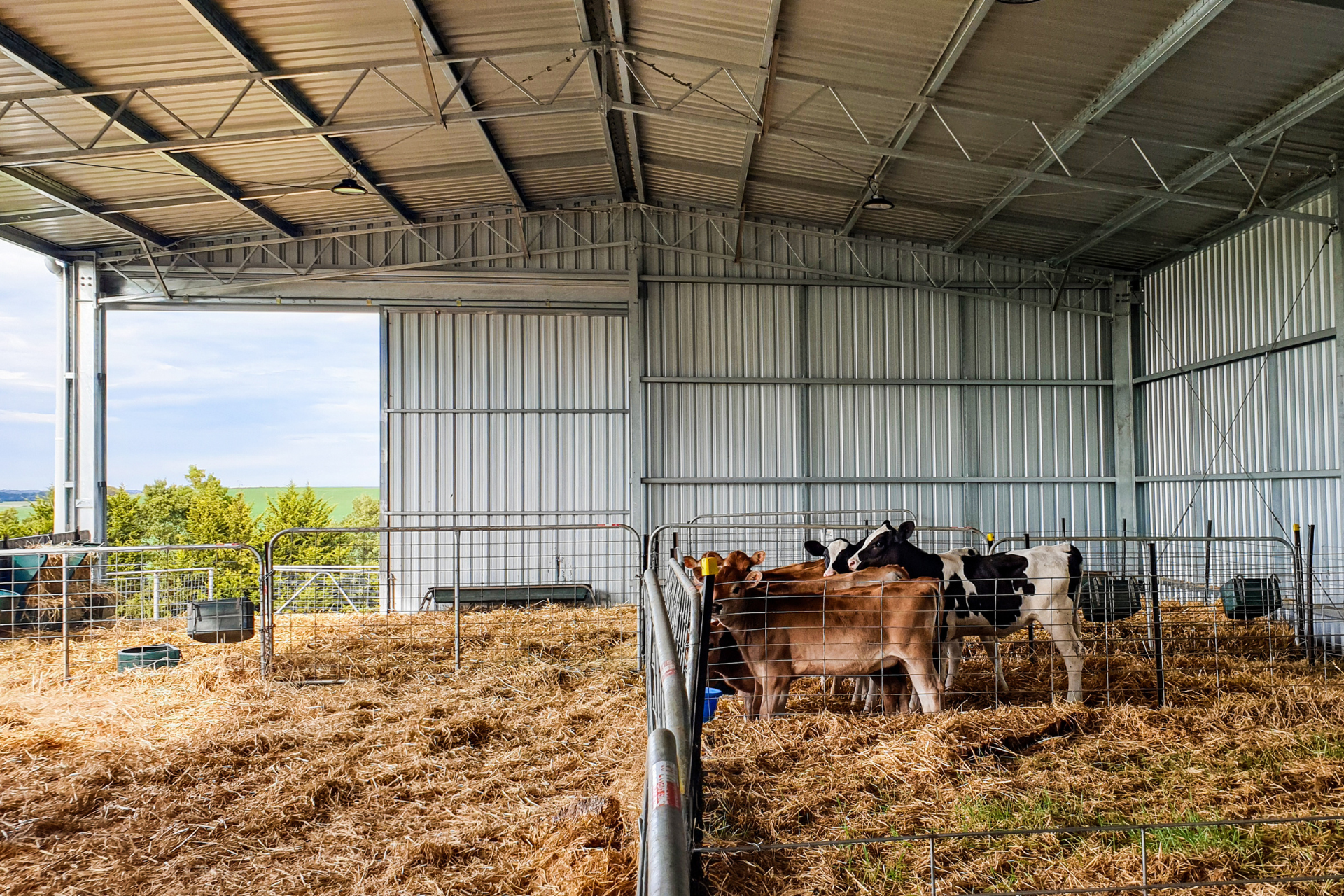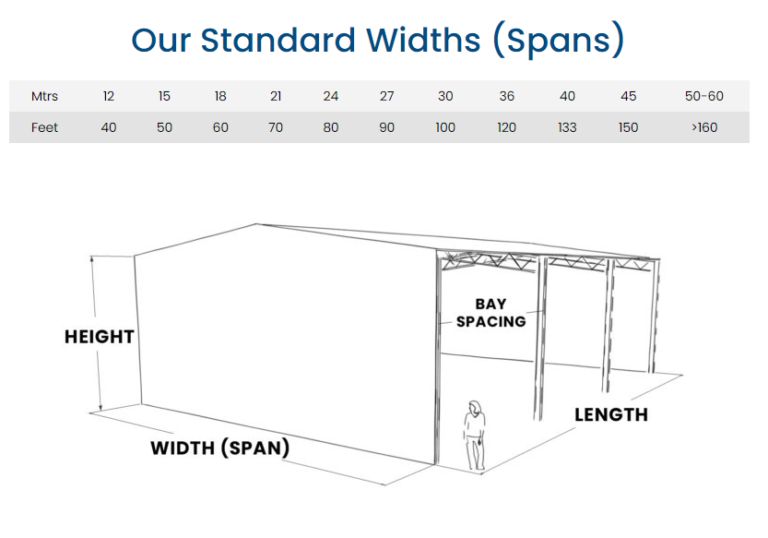Building a calving shed? Looking to upgrade your current facilities?
Having up-to-date and well-maintained facilities at calving helps make a busy time of the year less stressful and helps ensure everything runs smoothly.
There are several details to consider when building a calving shed though, from size and design to weather protection, airflow and corrosion protection.
And you more than likely are wondering about the cost.
How much does it cost to build a calving shed? What is the price to include concrete panels? Or a canopy?
And of course, time frames are another important consideration.
Will your calf shed be built in time? How can you ensure your build won’t be delayed?
All of these are valid questions when it comes to building a new calving shed. And it’s a good idea to have these answered before you commit to a new build.
So, in this article, we answer the top 10 questions our building consultants are asked about calving sheds.
We hope you find it helpful.
And if there are any questions that we haven’t answered for you, please let us know – send us an email, or give us a call.
We’d love to discuss your project with you.
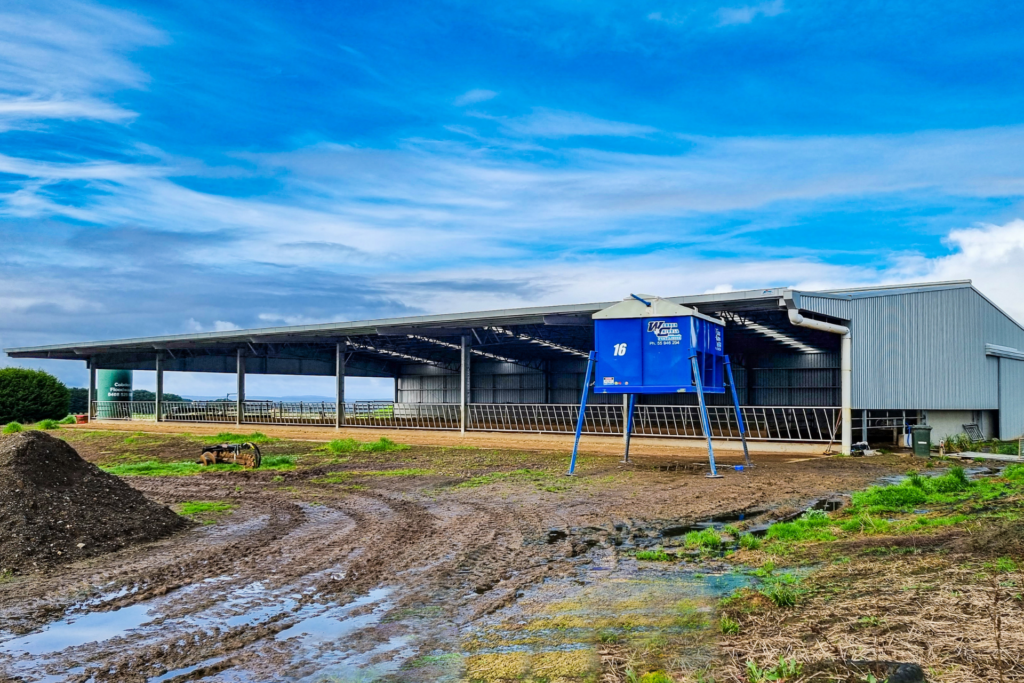
The Top 10 Questions About Building A Calving Shed, Answered
1. What Size Calving Shed Do I Need?
The best size for your calving shed will be determined by a number of factors including the number of animals and the length of the calving period.
And there are some industry recommended square metre rates to follow. For example, it is usually best practice to allow approx. 10 square metres per cow in a calving shed. For a calf shelter, at least two square metres per animal is recommended.
This ensures there is adequate space for the cows to express their natural behaviour patterns and provides a low-stress environment for calves to survive and thrive.
It is also a good idea to allow some additional space for you to be able to care for sick or vulnerable cows or calves away from the main group.
2. What Is The Best Calving Shed Design?
The best calving shed design is subjective as it depends on what works best for your farming operation and your requirements.
Some of the factors to consider when designing a calving shed are the number of cows and calves and whether the shed will be multi-use. For example, will the shed also be used to store fodder or bedding?
A popular option for smaller-scale calving sheds is a simple three-sided shed with sliding doors for access and for airflow.
If the shed is intended as a multi-purpose shed, there is the option of enclosed bays for equipment storage.
Or if the shed will also be used for hay storage, it’s a good idea to ensure the design is also suited for this. For example, choose bay spacings that will work well for hay storage, such as 8 metres or 8.5 metres.
Larger-scale calving sheds are usually a two or three-sided configuration with concrete panel walls, a ridge vent for airflow and a canopy for additional weather protection.
It’s essential to choose a design that works for you though. So, feel free to discuss your requirements with one of our building consultants and they will be able to help you work out the best design.
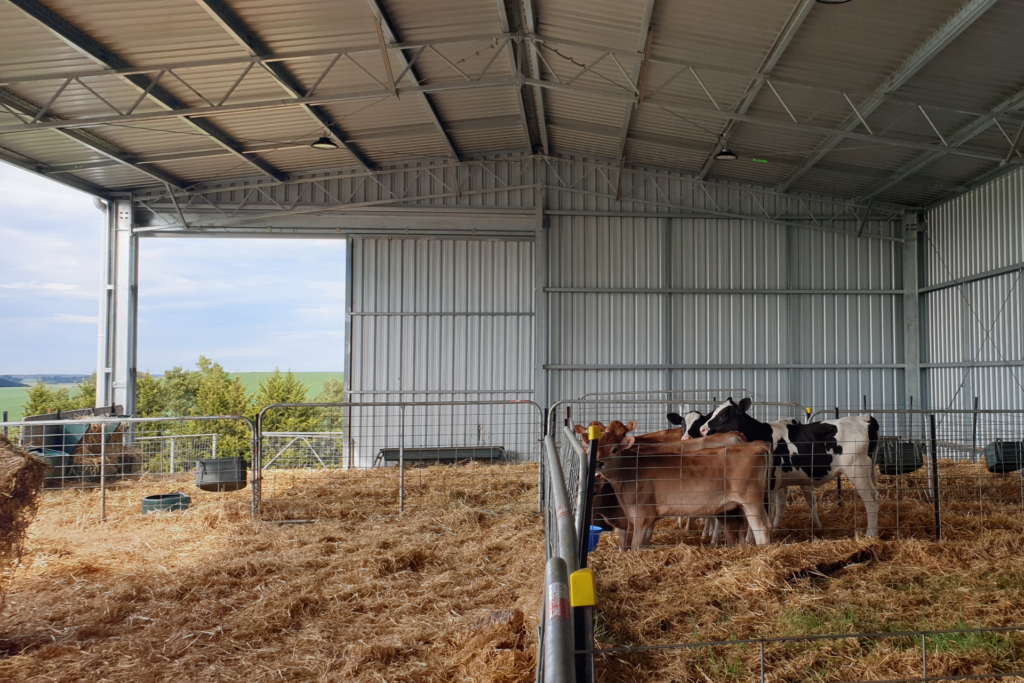
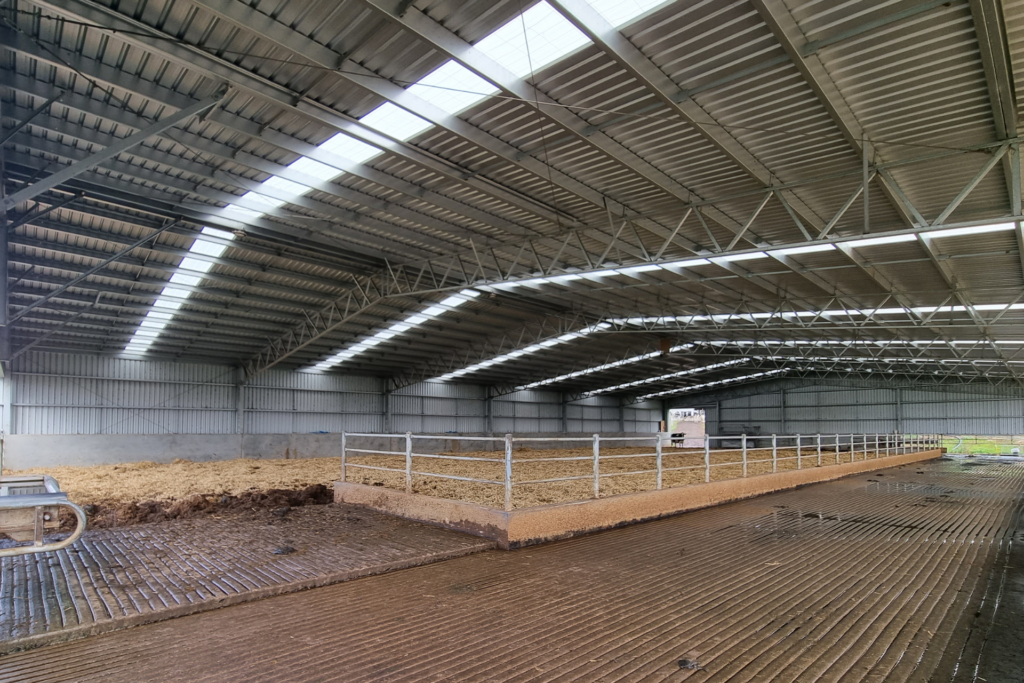
3. How Much Does It Cost To Build A Calving Shed?
Price is always an important consideration on a project.
If you are budgeting for a new calving shed build, here’s a handy price guide:
The average cost of a calving shed project in 2022 was approx. $170,000 including GST and installation.
You can learn more about calving shed prices, here – How Much Does It Cost To Build A Calving Shed?
4. Should I Include A Canopy? How Much Will It Cost?
Over the last few years, canopies have become popular additions to calving shelters, and there are a number of really good reasons why.
First and foremost, canopies provide excellent additional weather protection. And on top of this canopies are a cost-effective way to gain extra storage or undercover area without having to upsize the whole shed.
If you are weighing up whether to include a canopy on your shed, it might come down to how exposed your shed site is.
Or it might come down to price, how much you want to spend on your project and whether the benefits outweigh the costs for you.
You can generally expect to pay between $100 and $150 per square metre.
Learn more about shed canopy prices, here – How Much Does A Shed Canopy Cost?
5. Should I Include Concrete Panels? How Much Will They Cost?
Concrete panels are a must-have for a well-designed calving shed, particularly for large-scale and high traffic set ups.
Including concrete panels in your calving shed makes it easier to keep the shed clean and maintain a high level of hygiene. This helps prevent a costly spread of sickness and disease. And it also helps prevent corrosion and rust, keeping your shed in tip-top condition for longer.
If this is a priority for you and your operation, then concrete panels are well worth the investment.
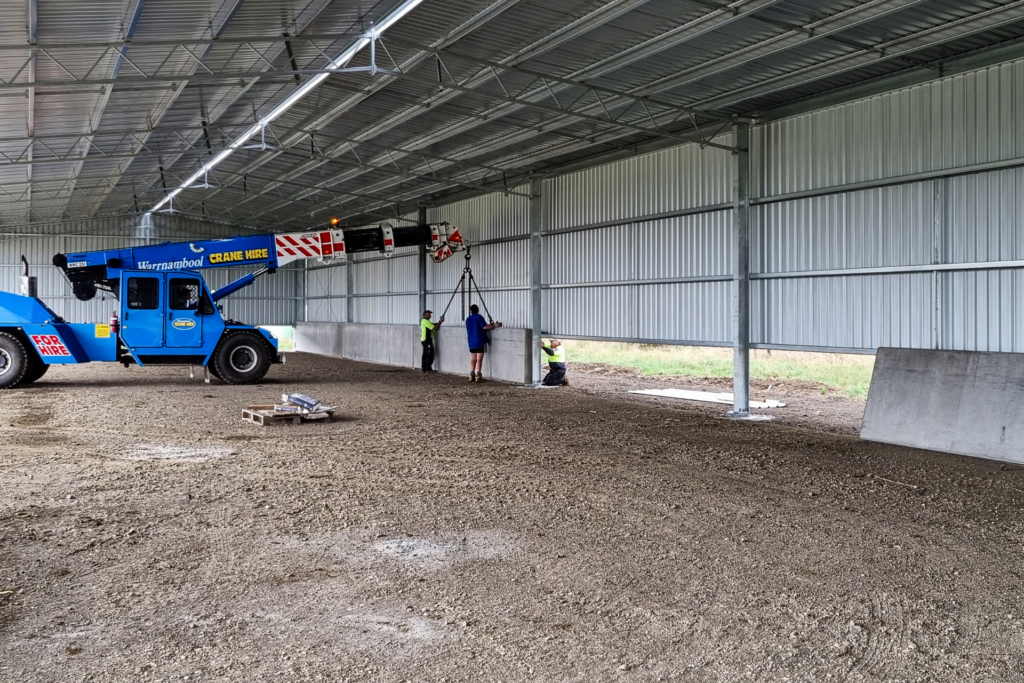
The most popular concrete panel size for calving sheds is around 1.5 metres high which costs approx. $500 per lineal metre.
You can learn more about concrete panel prices, here – How Much Do Concrete Panels For Sheds Cost?
We manufacture our own concrete panels at Action Steel, which means we don’t need to engage a third-party supplier making our concrete panels a cost-effective option.
6. Will My Calving Shed Require Council Permits? How Much Will They Cost?
Yes, your calving shed will more than likely require council permits.
You can learn all about council permits in these articles:
- Do You Need Council Approval For Farm Sheds?
- What Is The Difference Between A Building Permit And A Planning Permit?
- What Happens If You Build A Farm Shed Without Permits?
Unfortunately, council permits are an additional cost to your calving shed project. To help you budget for your council permit costs, here is a handy price guide – How Much Do Council Permits For Farm Sheds Cost?
One of the advantages of working with Action on your calving shed project is that we can manage the whole council permit application on your behalf.
This helps make your shed building experience a smooth, hassle-free one.
7. How Do I Prepare the Site For My Calving Shed?
Site preparation is one of the most important details for any shed build, but it is often overlooked.
Good site preparation makes it easier for the install team to construct your shed and helps prevent the build from being delayed due to wet weather.
And details like drainage away from the shed help keep the flooring dry.
You can learn how to prepare your shed site, here – How Do I Prepare The Site For My Shed?
Or watch the video below.
8. How Do I Protect My Calving Shed From Corrosion And Rust?
A calving shed is a really corrosive environment.
There are a number of things you can do to combat this though.
The most effective way is to build a shed with a fully hot dip galvanised frame. This means both the columns and trusses have been immersed in a bath of molten zinc.
You can learn more about this and why every Action Steel shed is fully hot dip galvanised, in these articles:
- A Guide To Hot Dip Galvanising
- What Is The Difference Between Pre-Gal and Hot Dip Galvanising?
- Why You Should Avoid A Shed With Painted Columns
- How Can I Tell If Steel Is Hot-Dip Galvanised?
Australian-made steel, concrete panels and keeping your calving shed clean also play an important role in keeping your calving shed rust-free.
9. What Is The Time Frame For A Calving Shed Project?
The time frame is an important consideration for a calving shed project, particularly if you are replacing your existing infrastructure.
The last thing you want to happen is to be caught short without a shed or shelter at calving.
And if you are applying for a grant such as the Woolworths Dairy Innovation Fund or taking advantage of Temporary Full Expensing there may be deadlines that need to be met.
The lead time for a new calving shed build in 2023 is about four to five months. This does depend on the project though. For example, a simple three-sided shed will be designed, manufactured and installed quicker than a more complex project.
At Action Steel we have streamlined processes and accurate scheduling from drawings through to installation. So, we can provide you with an expected delivery and construction date for your project to give you peace of mind.
There are some things that you can do to ensure the project isn’t held up including making sure the site is prepared well in advance and has all-weather access.
And now for question number 10!
10. How Can I Ensure My Calving Shed Has Effective Ventilation and Weather Protection?
With a calving shed, it is important to find the right balance of effective weather protection while still having good airflow and ventilation through the shelter.
There are a number of ways to achieve this.
The first step is to choose the correct orientation for the shed. This plays an important role in protecting your calves from the prevailing weather and also keeping the site dry and accessible.
We usually recommend an east-facing shed and you can learn why, here – Which Way Should My Shed Face?
The design features that you could incorporate into your shed design include a ridge vent. This is installed in the ridge of the roof for even ventilation and air movement through the shed. Or for smaller sheds, this can be achieved with whirlybird vents.
Sliding doors are another practical option because not only do they provide access they can also be opened to improve airflow or closed to provide additional weather protection.
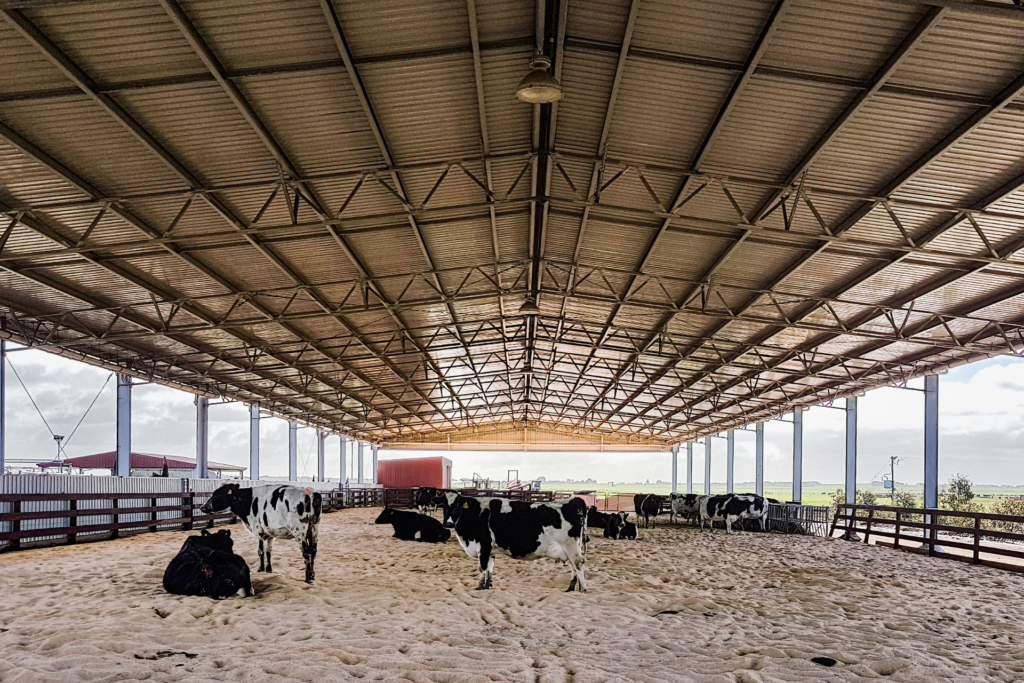
If you have opted for a roof-only or two-sided configuration then partially clad walls and gable infills can be installed to help provide shelter from the prevailing weather.
And as we have already discussed, a canopy on the open side of the shed is an excellent way to provide additional weather protection, without fully enclosing the shed.
If you aren’t sure what design features are the best fit for your project, talk to one of our building consultants. They are always more than happy to discuss different options and designs.
So that’s the top 10 questions about calving shed builds, answered!
We hope this has helped you with your project planning! We’ve also included some more resources below that you might find useful when building a calving shed.
Useful Resources
- Dairy Shed & Infrastructure Guide (Brochure Download)
- Featured Project – 18 Metre Span Herringbone Dairy Shed
- Latest Projects Gallery
- Can I Write-Off My Farm Shed In 2023?
That’s a wrap on calving sheds and the 10 top questions we are asked about them!
For more information and articles on calving sheds and dairy sheds, check out our Learning Hub.
Building a calving shed and need a price on your project? Simply fill out the Request A Quote form or give us a call.
